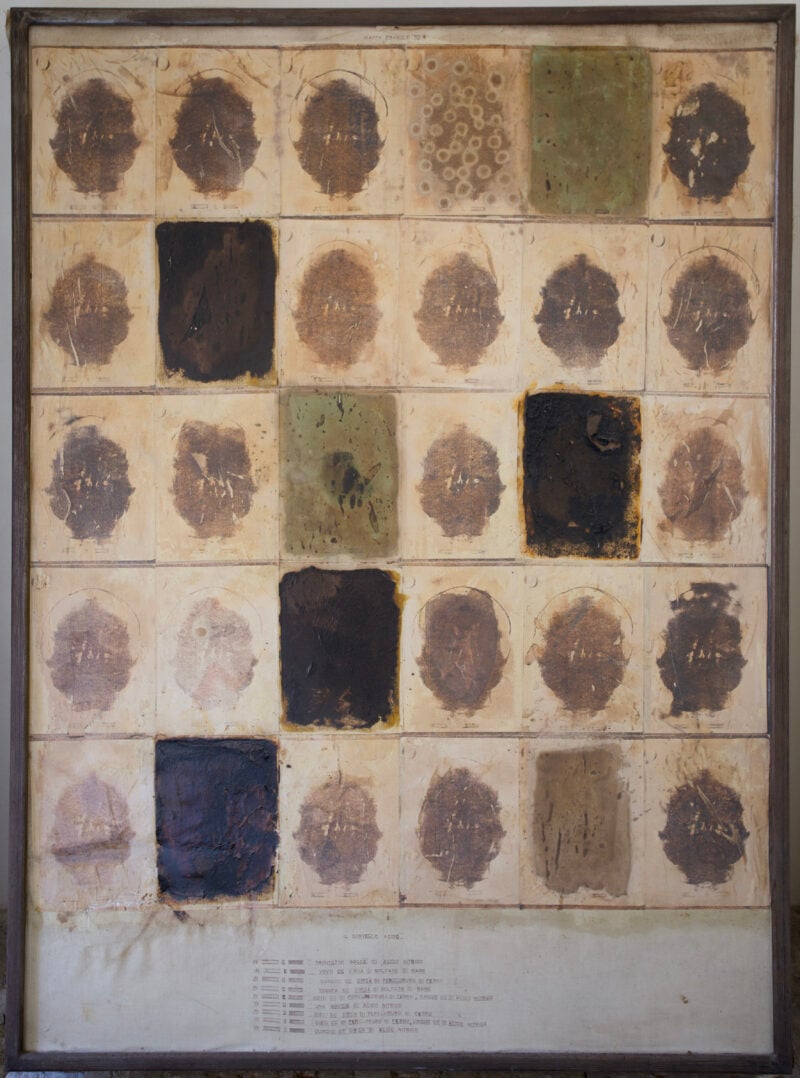
CLAUDIO COSTA, 1942 – 1995
Claudio Costa was born in Tirana but moved to Chiavari as a child. In 1961, he went to Milan to attend the Faculty of Architecture at the Polytechnic University. In 1964, thanks to a scholarship, he left for Paris, where he spent five years that were of great importance for the genesis of his poetics: he met Marcel Duchamp and experienced the ferment of the youth movements of May 1968 and the avantgarde art scene. He returned to Rapallo, Liguria, in 1969, and his first solo exhibition (La vela e altro) was held that year at the Galleria La Bertesca in Genoa. It was in this context that he met Francesca and Massimo Valsecchi, who have been closely following the artist’s career ever since. The Craneologie season, exhibited from 1970, is linked to the study of the human brain and palaeontology, which attracted the interest of Lucio Amelio in Naples and Dieter Hacker in Berlin. The artist was already a formidable aggregator of personalities; the Fluxus galaxy (Robert Filliou, Erik Dietman, George Brecht) gravitated around him. His theoretical commitment is declared in Evoluzione-involuzione (1972), a text that places man in an evolutionary chain made up of errors and indeterminacy. The works of these years are marked by a growing attention to anthropological themes, culminating in Per un inventario delle culture (1975), an exhibition held in Massimo Valsecchi’s gallery in Milan. Here, Il Museo dell’Uomo, Claudio Costa’s major work, reappears, functioning as a theoretical demonstration of the possibility of “involution” for civilisations that alter, through technology, an empathetic relationship with nature.
The next step in Costa’s research was his work in Monteghirfo, where he founded a “Museum of Active Anthropology” that preserves objects of peasant material culture, re-semantising them as ready-mades. Another exhibition in Massimo Valsecchi’s gallery, accompanied by an essential theoretical elaboration, presented these positions (Materiale e metaforico, 1977). In the same year, he participated in Documenta 6 and moved to Genoa.
In 1978, his alchemical period began, which ended in 1986 with his participation in the “Art and Alchemy” section curated by Arturo Schwarz at the Venice Biennale. During this phase, he continued to exhibit at the Valsecchi gallery (L’inafferrabile circolazione dell’umano, 1981; Mobile (Il Museo dell’Uomo), 1982; Il Fantasma dell’Opera, 1984). In this tireless exploration, another aspect was offered by psychiatry, with the involvement of patients suffering from mental disorders in the production of works of art, within the psychiatric hospital in Quarto, where Costa co-founded the Institute for Unconscious Materials and Forms (1989).
The final phase was marked by Costa’s travels to Kenya, Uganda and Senegal, which he began in 1990. One project that was never realised was to found a last museum, the Infinite Museum of Possibilities and Communications between Europeans and Africans. Costa died prematurely in 1995, leaving behind a legacy of some of the most stimulating works and research of the second half of the 20th century in Italy.

